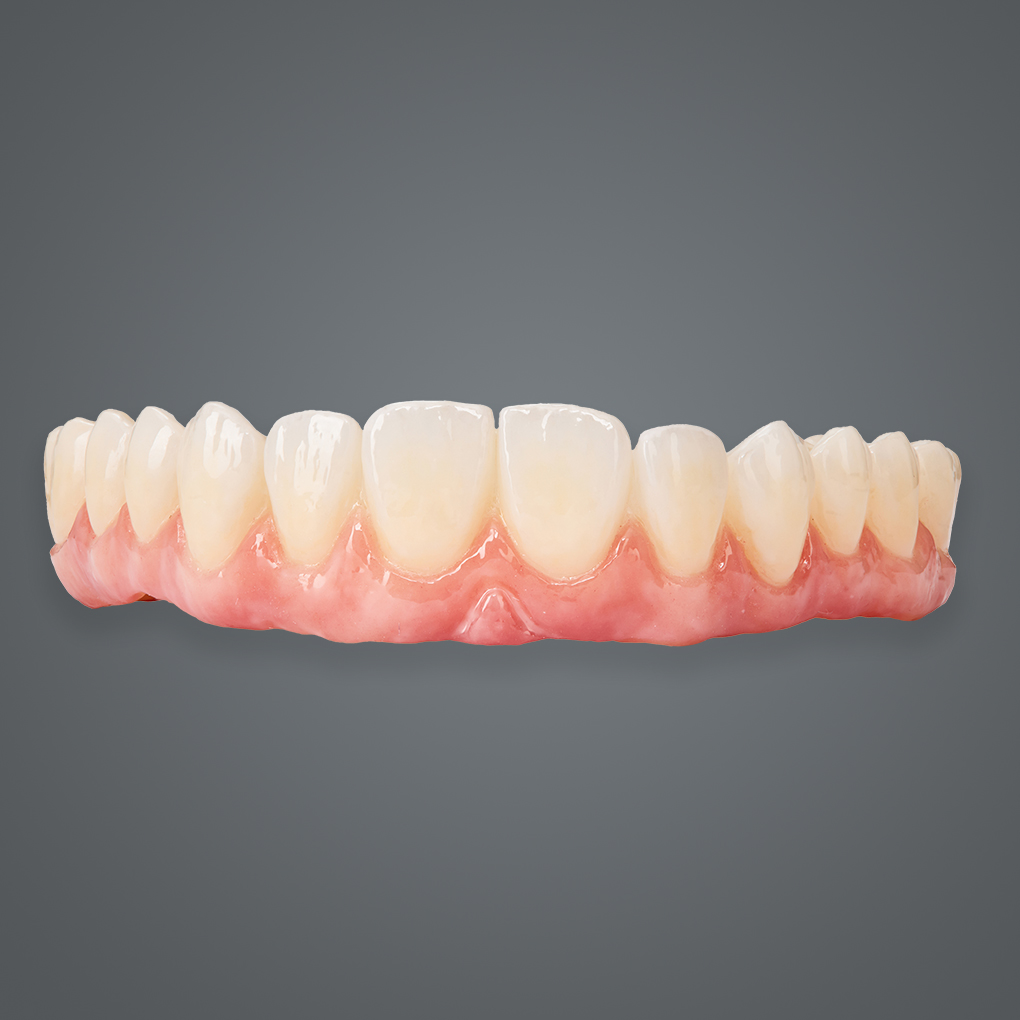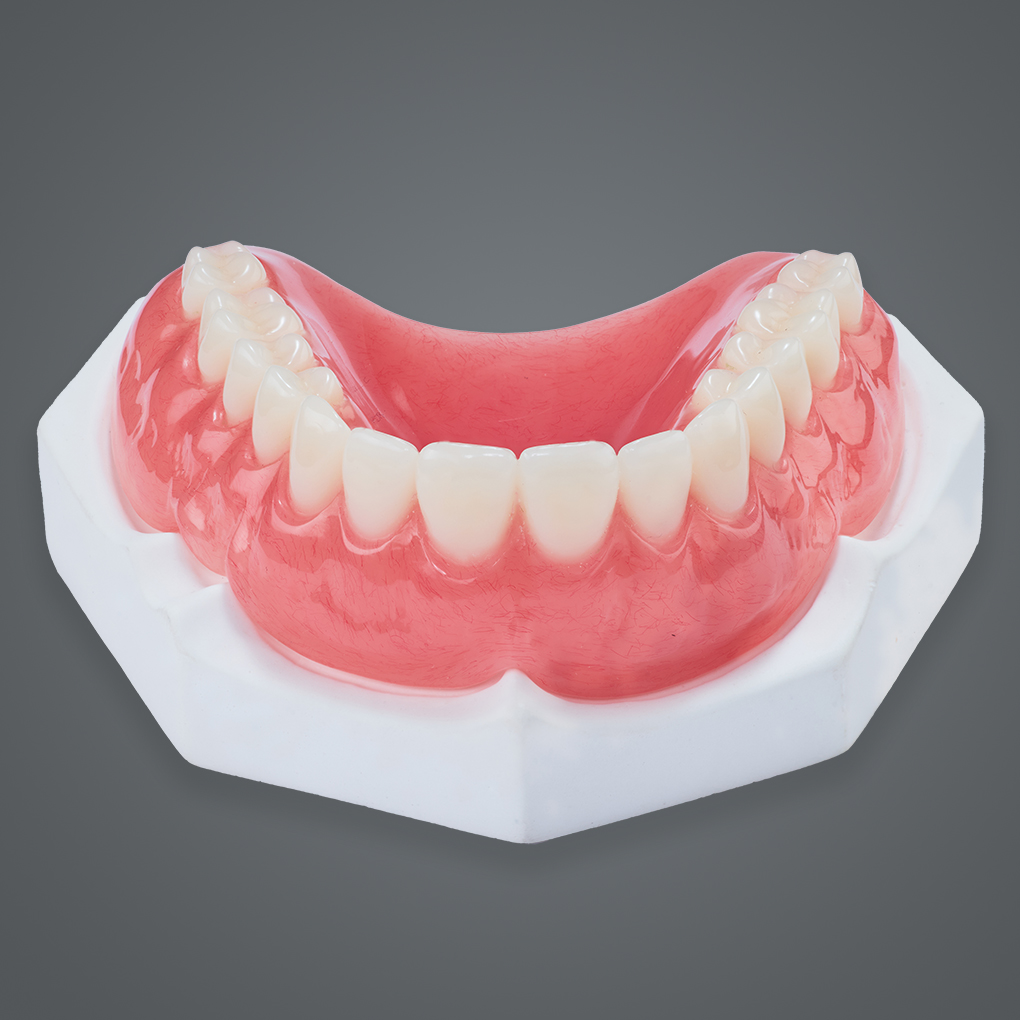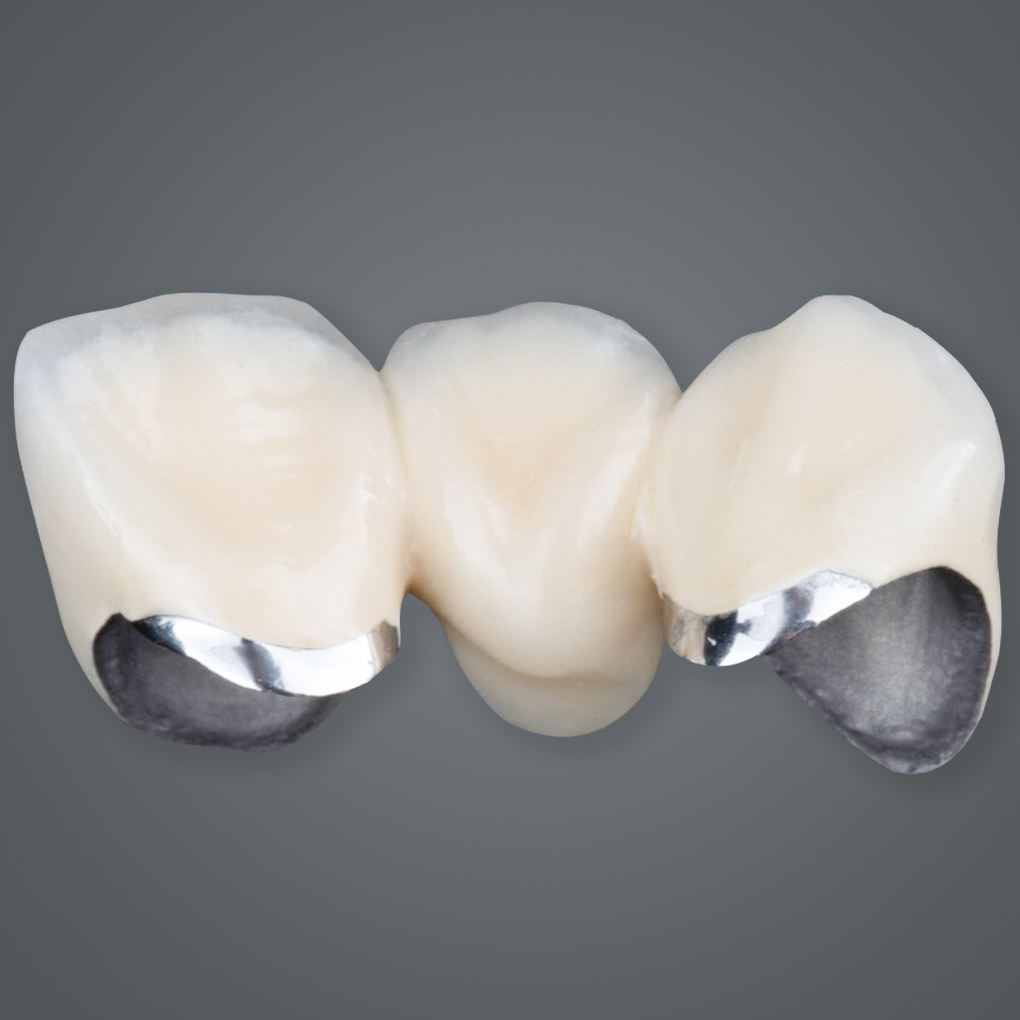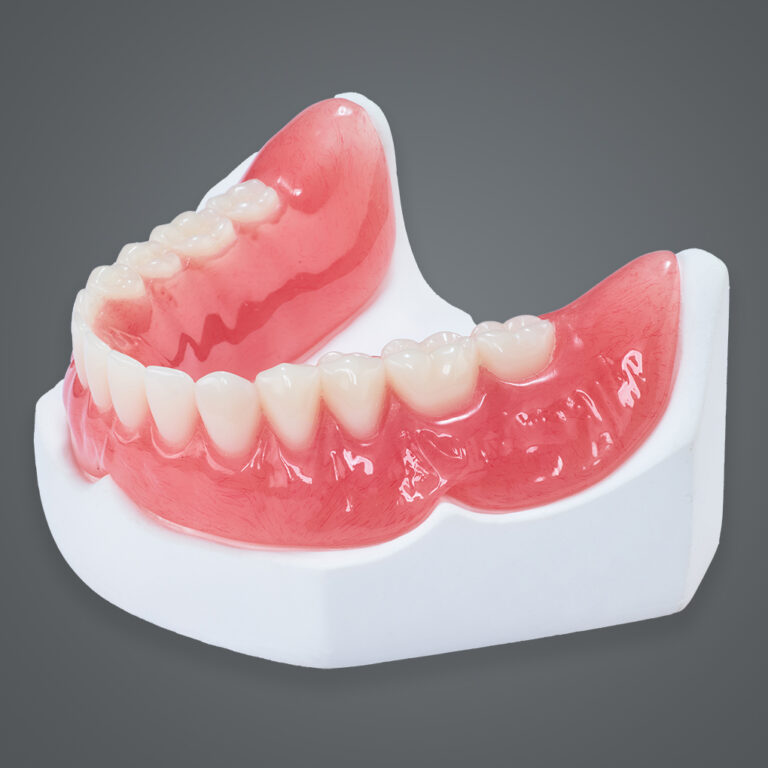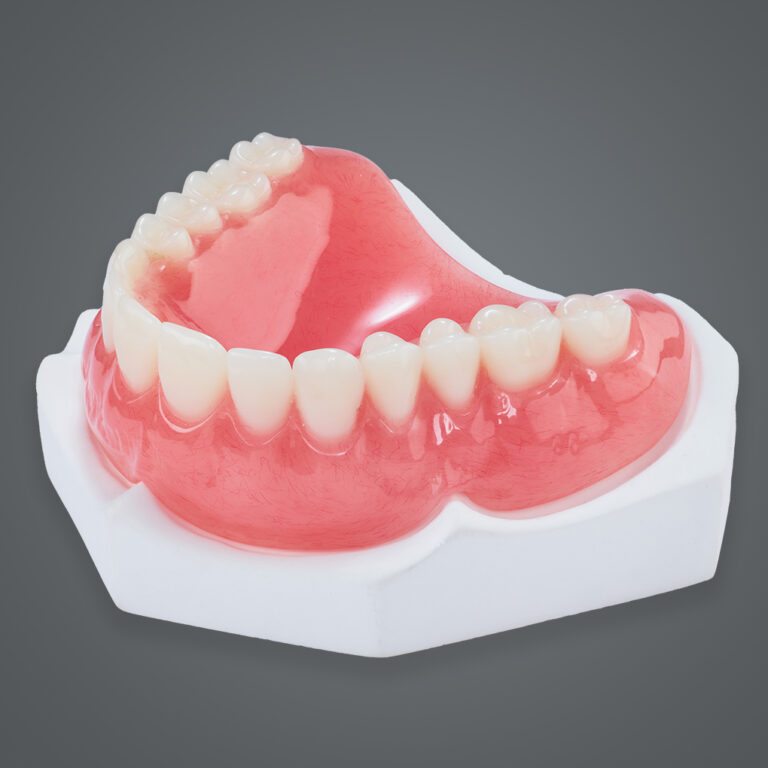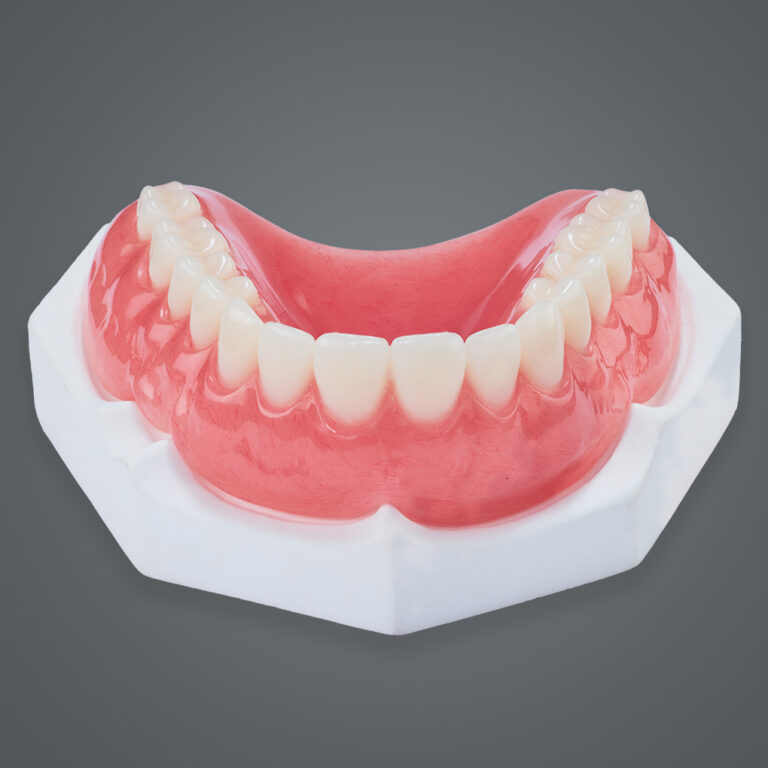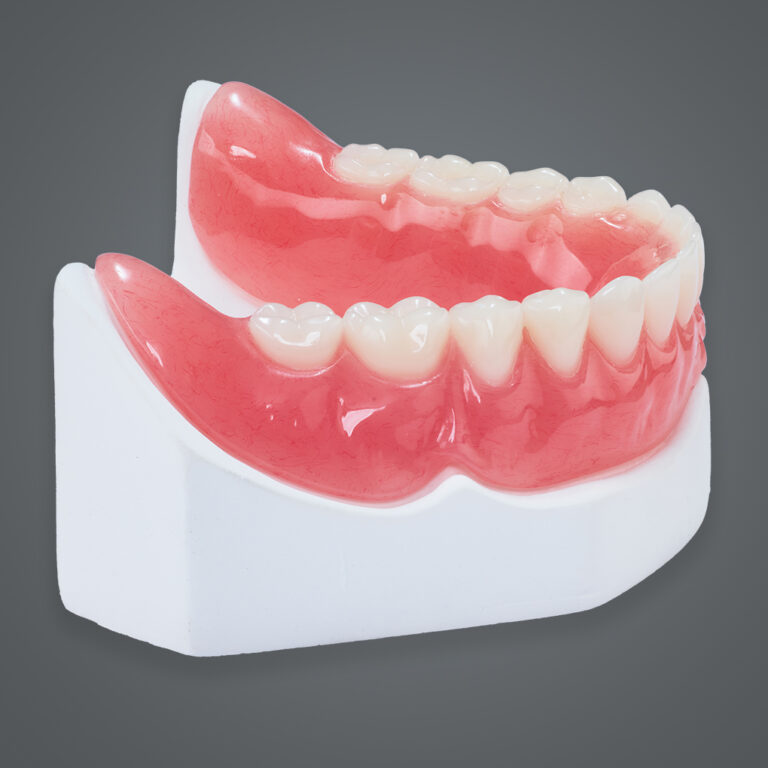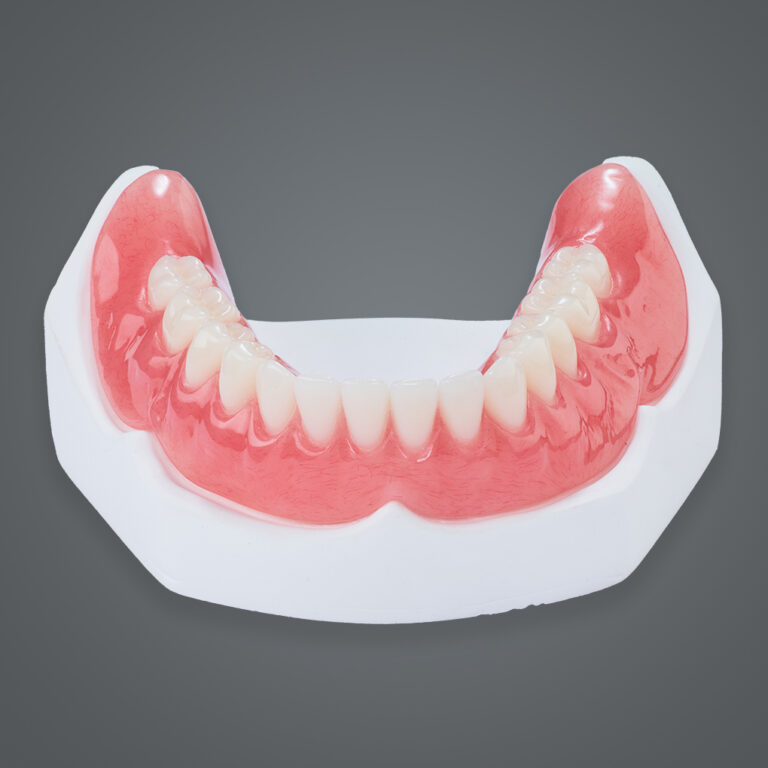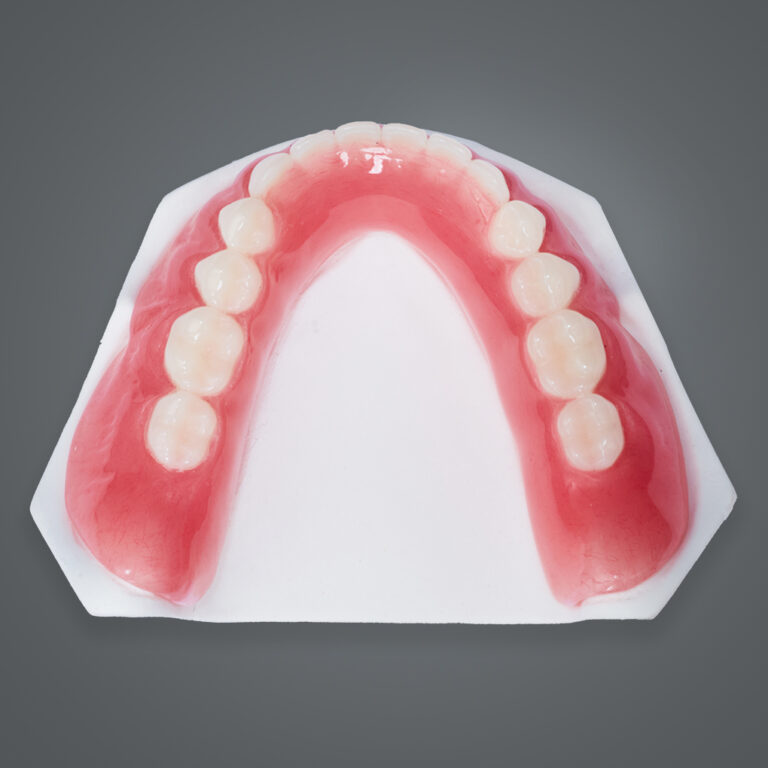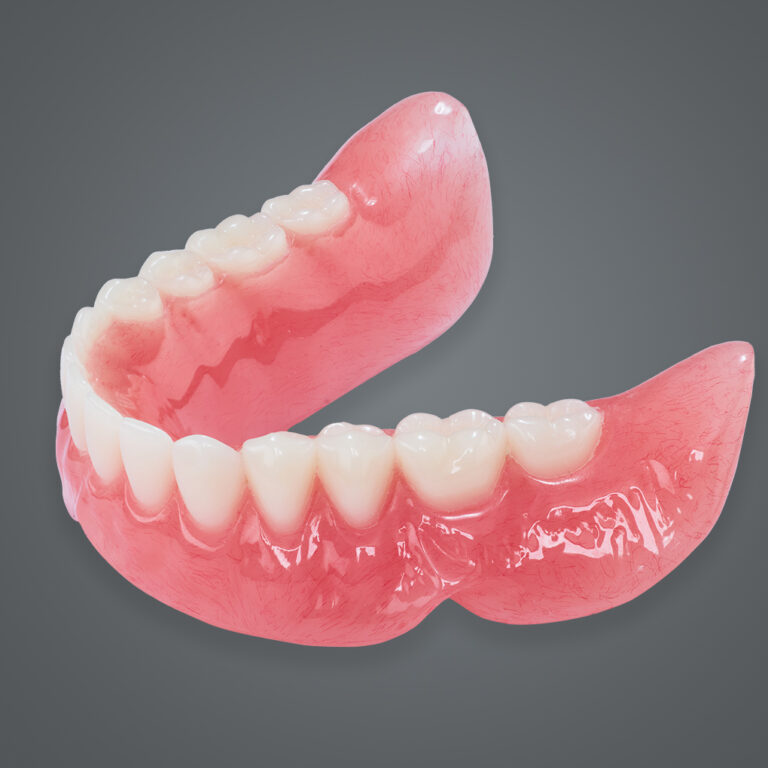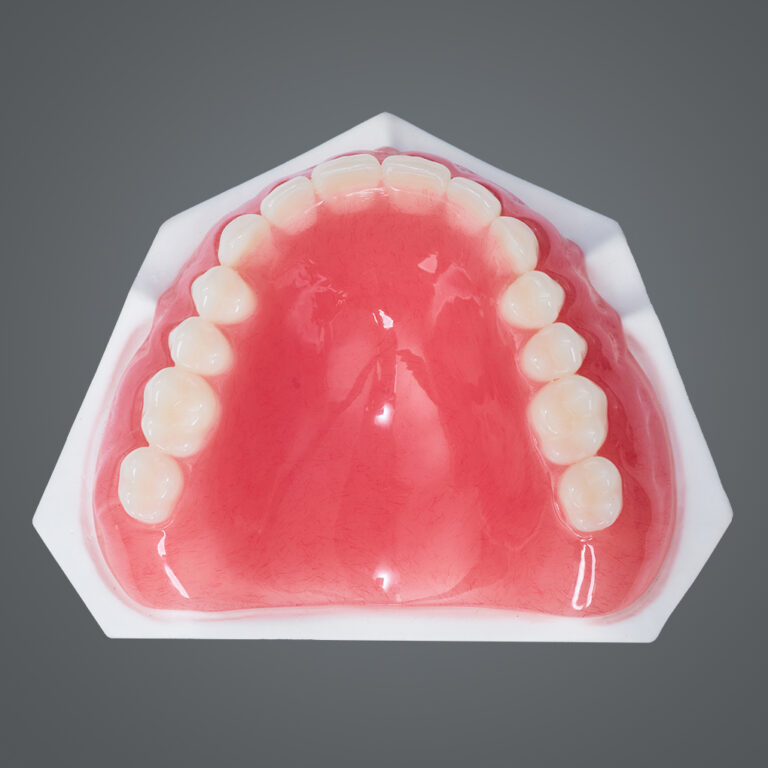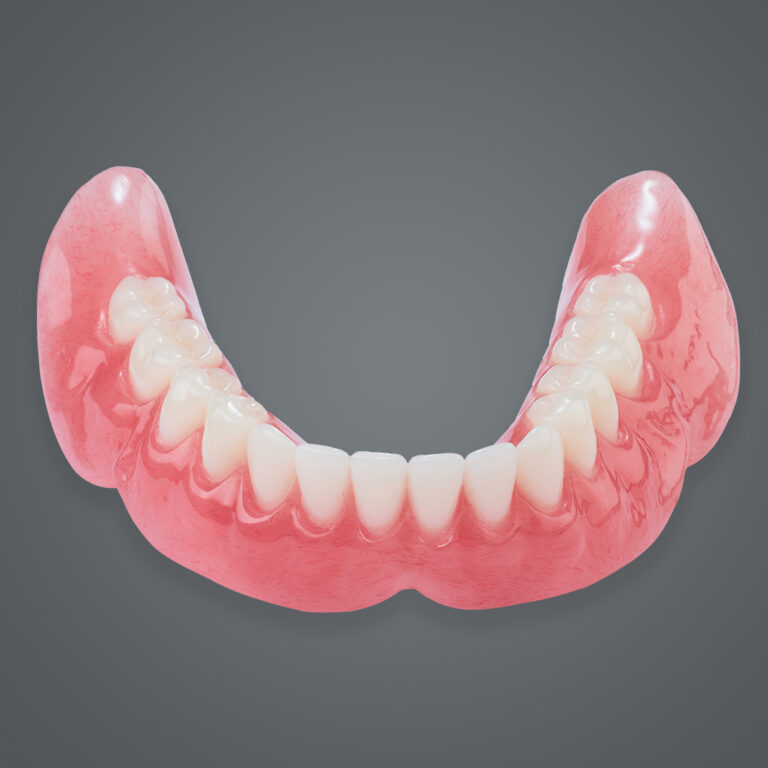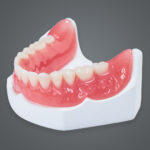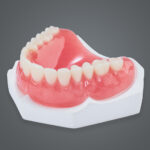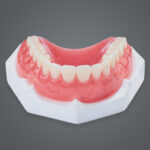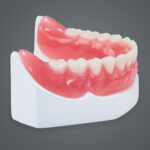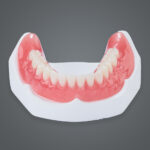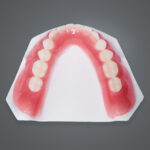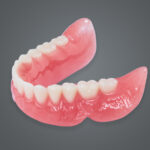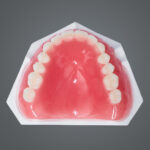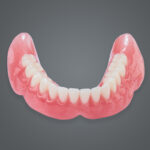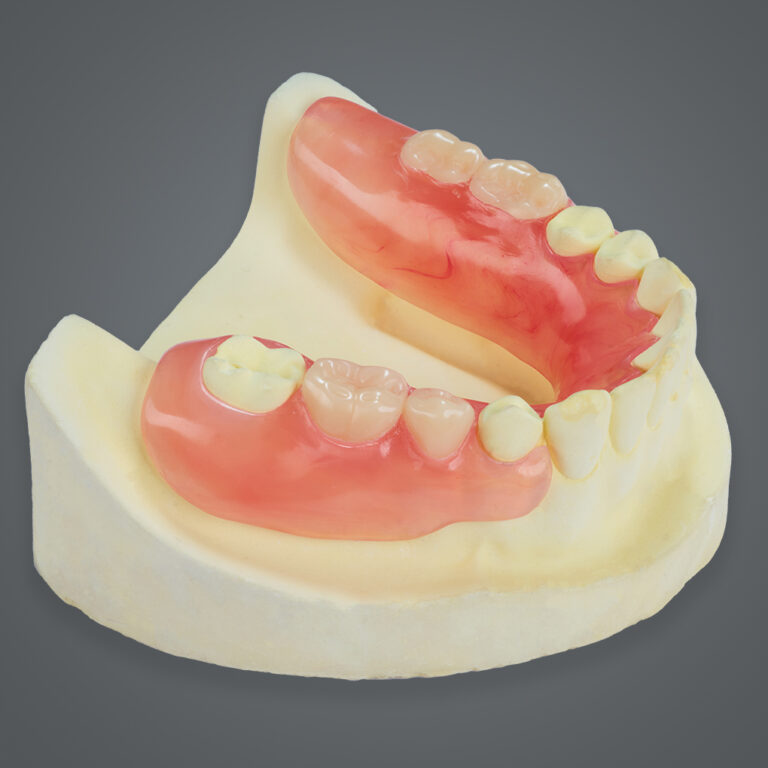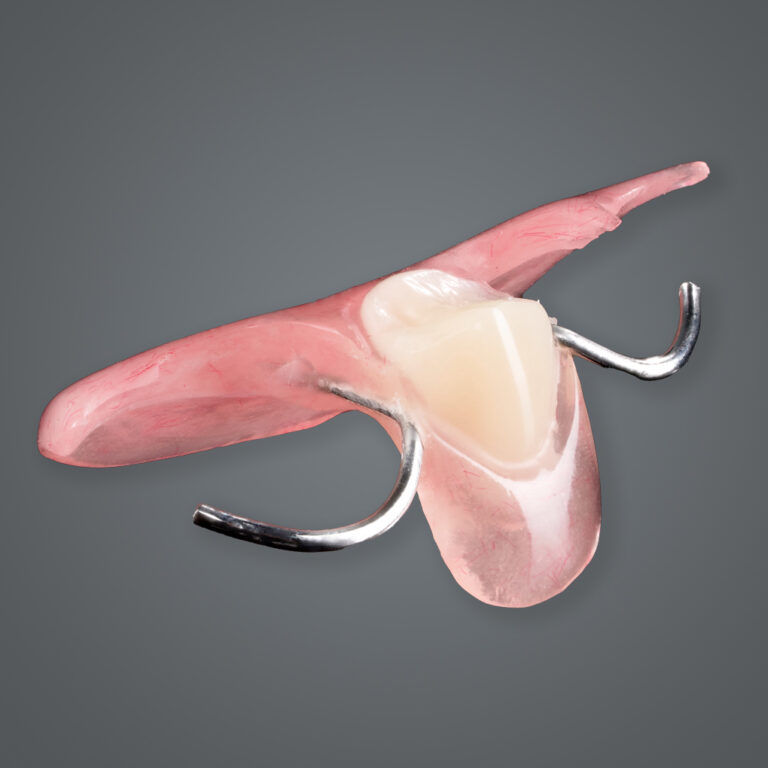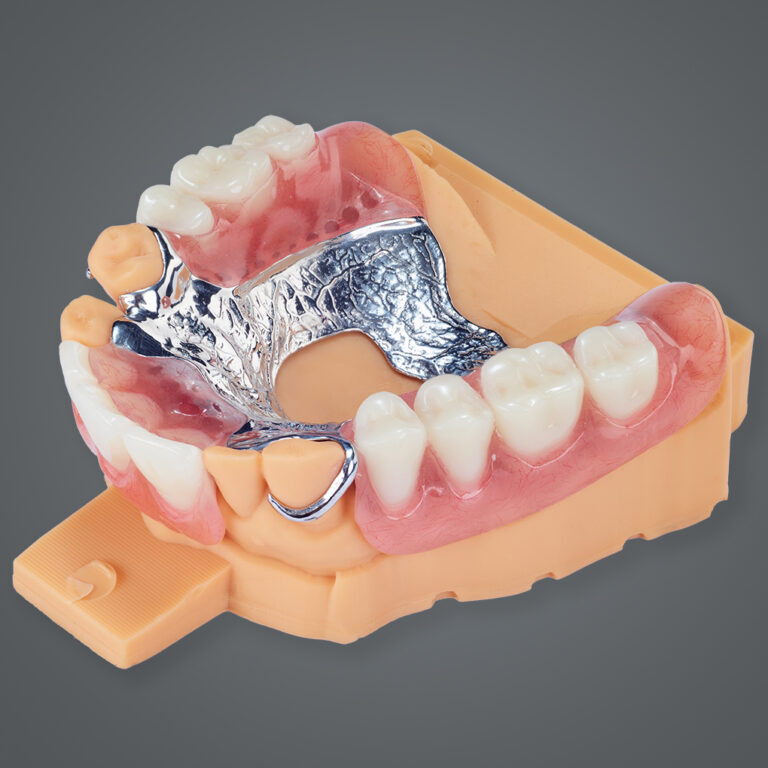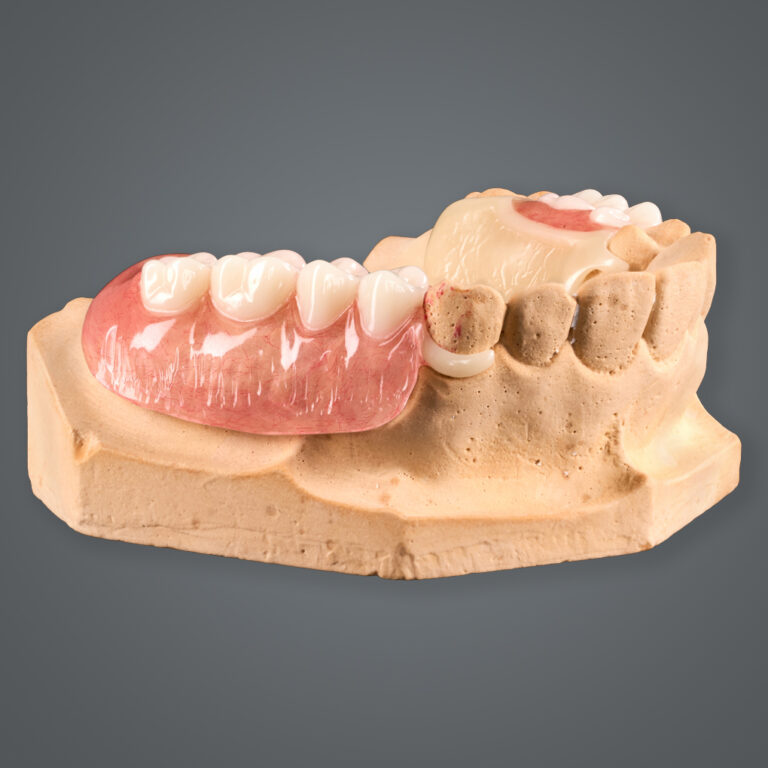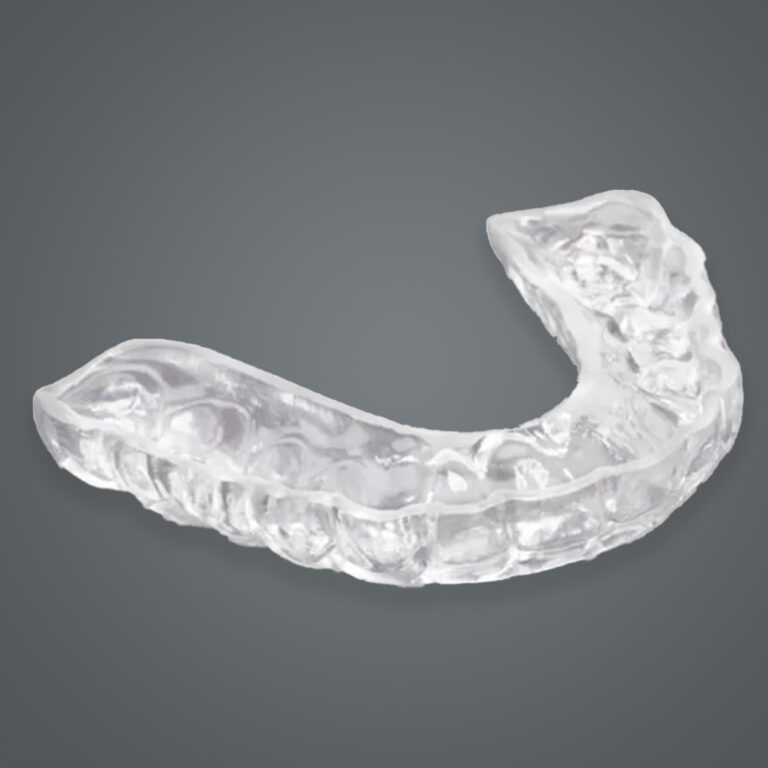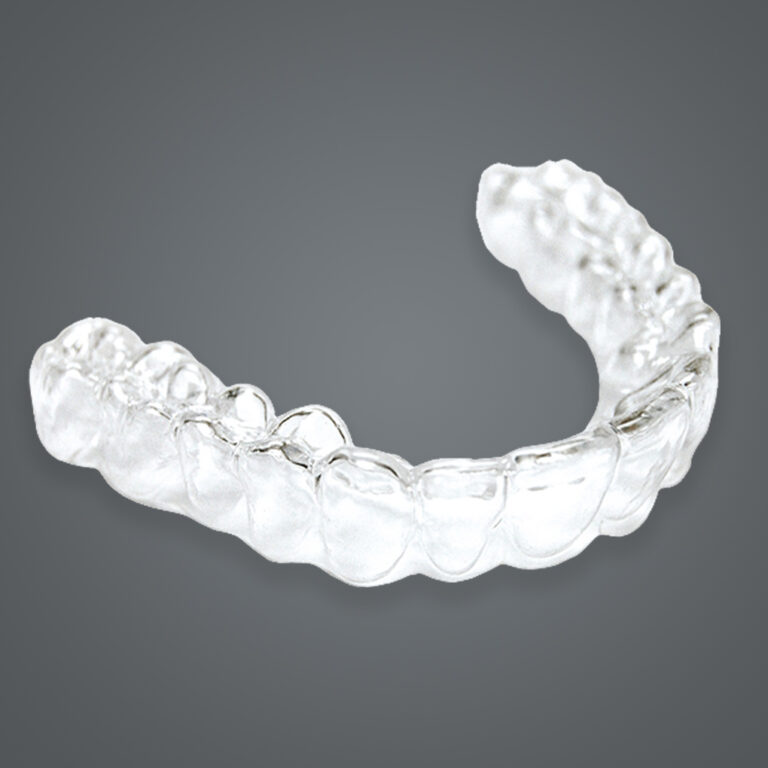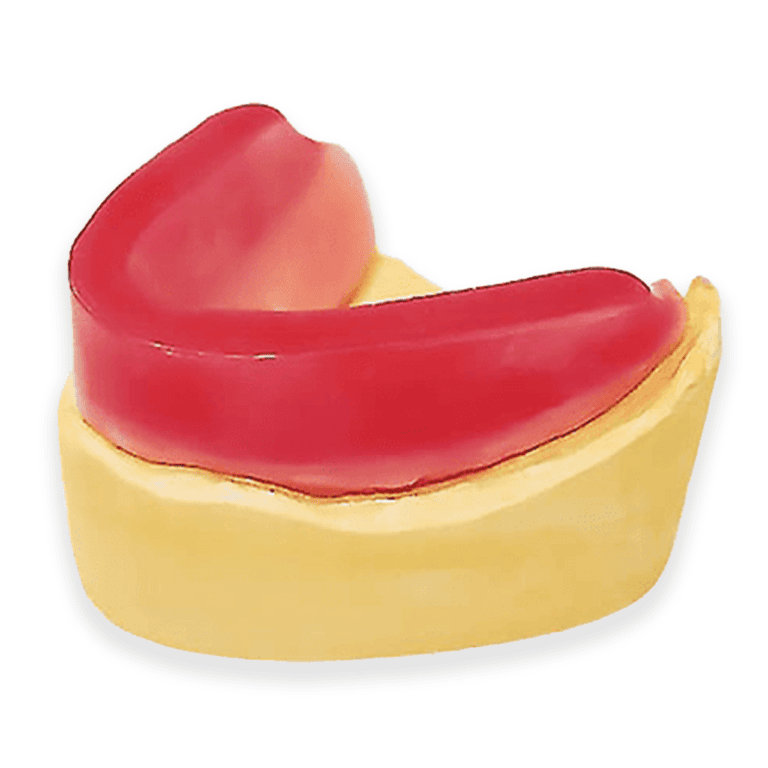Experience the future of dental care with Digital Dentures from XDENT LAB. Our advanced technology ensures precision, comfort, and a natural look for every Denture we create. Discover how our innovative solutions can transform your smile with unmatched quality and efficiency.
A digital full denture restoration refers to a complete set of dentures fabricated through digital technologies such as CAD/CAM (Computer-Aided Design/Computer-Aided Manufacturing). This modern method replaces traditional manual techniques, offering greater precision, consistency, and efficiency in the manufacturing process. Digital Dentures are created using advanced scanning and design software, followed by 3D printing or milling processes, ensuring a customized and anatomically accurate fit for the patient.
Description:
Digital full denture restorations provide a complete arch of artificial teeth, typically used to replace an entire set of missing teeth in one or both jaws. These dentures are custom-designed for each patient, ensuring a snug fit, improved function, and a natural appearance. The digital workflow eliminates many errors associated with traditional impression-taking and hand crafting, ensuring that every detail, from bite alignment to aesthetic considerations, is finely tuned.
Digital dentures are designed using 3D intraoral or extraoral scanning, which captures a precise image of the patient’s oral anatomy. This digital model is then utilized by CAD software to create an exact blueprint for the dentures, which can be adjusted and customized according to the clinician’s and patient’s preferences.
Advantages:
- High Precision: Scanning ensures an accurate fit, reducing adjustments.
- Consistency: Digital records can be stored and duplicated, making future adjustments or replacements more efficient.
- Comfort: Customized design reduces the risk of sore spots and pressure points.
- Aesthetics: The digital design allows for precise customization of tooth shape, size, and arrangement, enhancing the natural look.
- Time-Efficient: The digital process reduces fabrication time significantly compared to traditional methods.
- Durability: Materials used in digital dentures are often high-quality, providing strength and longevity.
Specifications:
- Material Options:
- Base: Typically made from high-quality PMMA (Polymethyl Methacrylate) or other durable, biocompatible materials.
- Teeth: Can be fabricated from high-strength acrylic resin, composite resin, or ceramic for a more aesthetic and functional result.
- Fabrication Process:
- Scanning: Digital impressions are taken using an intraoral scanner or desktop scanner from physical impressions.
- Design: A digital model of the patient’s oral structure is created using CAD software, allowing the technician to adjust the tooth setup, bite alignment, and aesthetics.
- Manufacturing: The dentures are either milled from a block of material or 3D printed using additive manufacturing techniques.
- Finishing: After fabrication, the dentures are polished, characterized, and finalized for delivery.
- Occlusion and Function:
- Bilateral Balanced Occlusion: Optimized for stability and function, providing even distribution of forces during chewing and minimizing denture movement.
- Natural Occlusion Design: Designed to mimic the patient’s natural bite and jaw movements for comfort and efficiency in mastication.
- Customization:
- Gingival Design: Highly aesthetic gingival contouring and shading, mimicking the natural gum tissue.
- Tooth Arrangement: Customized to patient preferences or anatomical needs, ensuring a natural look with proper facial support.
- Coloring and Staining: Can be tailored to the patient’s natural teeth color, achieving a lifelike appearance.
- Software Compatibility:
- Compatible with leading CAD software such as 3Shape, Exocad, or Dental Wings, ensuring seamless integration with various dental clinic systems.
- Retention Options:
- Standard denture fit or adaptable to various retention methods such as implant-supported overdentures or locator attachments for improved stability.
- Arch Forms:
- Customizable for upper and lower arches, with options for standard or advanced anatomical forms, providing enhanced esthetics and function based on the patient’s needs.
Digital Denture Workflow:
- Patient Scanning: Intraoral or extraoral scanning to capture accurate impressions.
- Design Phase: The digital denture is designed using CAD software, simulating the final fit and appearance.
- Manufacturing: 3D printing or milling is used to produce the final denture prosthesis.
- Finishing & Delivery: Dentures are stained, polished, and delivered to the clinician for final fitting.
This innovative approach to denture restoration ensures a more predictable, efficient, and accurate outcome, with improved comfort and aesthetics for the patient. The digital workflow allows for easy modifications and archiving of data, making future replacements or adjustments seamless for both the dentist and the dental lab.

